
Swammerdamia pyrella is a moth of the family Yponomeutidae. It is found in Europe, North America and Japan.

Argyresthia spinosella is a moth of the family Yponomeutidae. It is found in Europe and Anatolia.
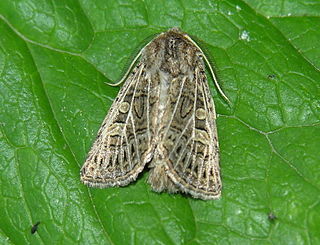
Tholera decimalis, the feathered Gothic, is a species of moth of the family Noctuidae. It is found in Europe and Scandinavia then through the Palearctic to Asia minor, western Central Asia, southern Siberia and in North Africa.

Argyresthia conjugella, the apple fruit moth, is a moth of the family Yponomeutidae. It is found in Europe, Siberia, Central Asia, Japan, and North America.
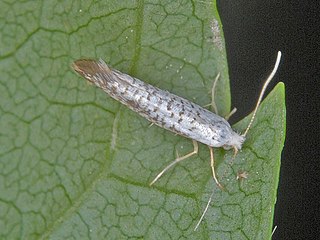
Argyresthia retinella is a species of moth of the family Yponomeutidae.

Paraswammerdamia lutarea is a moth of the family Yponomeutidae. It is found in Europe.

Argyresthia glaucinella is a moth of the family Yponomeutidae. It is found in Europe.
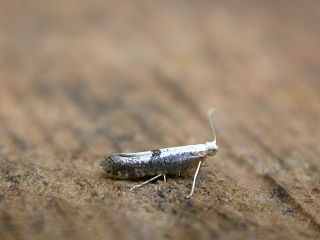
Argyresthia semifusca is a moth of the family Yponomeutidae. It is found in Europe.

Eriocrania unimaculella is a moth of the family Eriocraniidae found in Europe. It was first described by the Swedish naturalist Johan Wilhelm Zetterstedt in 1839. The larvae feed inside the leaves of birch, making a mine.
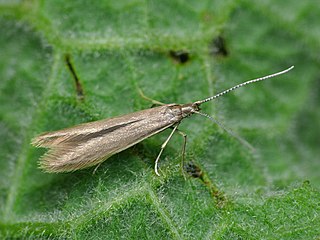
Coleophora caespititiella is a moth of the family Coleophoridae. This species is found throughout the United Kingdom and most of Europe. It is also known from North America. The Coleophoridae group are often collectively known as the case moths or case-bearers.
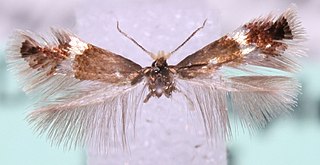
Stigmella hemargyrella is a moth of the family Nepticulidae. It is found in most of Europe, except Iceland, Norway, Finland, Portugal and most of the Baltic region.

The testaceous white-back is a moth of the family Coleophoridae. It is found in most of western Europe.

Asterivora colpota is a moth in the family Choreutidae. It was first described by Edward Meyrick in 1911. It is endemic to New Zealand and is found throughout the North and South Islands. It is regarded as a lowland species and adults are on the wing from November until March. This moth has been collected by beating shrubs.
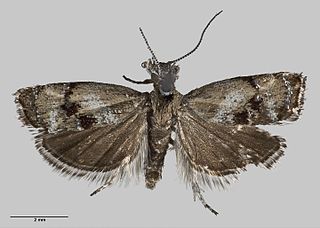
Asterivora urbana is a species of moth in the family Choreutidae. It is endemic to New Zealand and has been observed in Arthur's Pass. Adults are on the wing in January.

Asterivora tillyardi is a species of moth in the family Choreutidae. It is endemic to New Zealand and collected at Aoraki / Mount Cook. Adults of this species are on the wing in March.
Brenthia leptocosma is a species of moth of the family Choreutidae. It is found on Mauritius and Réunion in the Indian Ocean.

Coleophora adjunctella is a moth of the family Coleophoridae found in Europe.
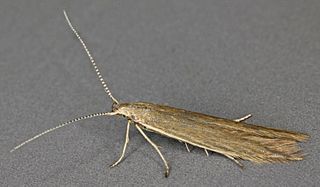
Coleophora alticolella is a moth of the family Coleophoridae, found in Europe and North America.
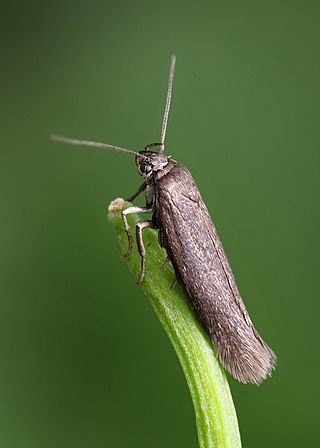
Scythris picaepennis is a moth of the family Scythrididae first described by Adrian Hardy Haworth in 1828. It is found in Europe.
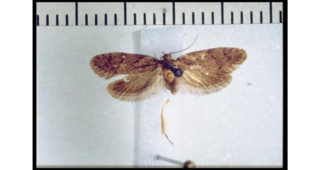
Euchersadaula tristis is a moth of the family Oecophoridae. It was first described by Alfred Philpott in 1926. This species is endemic to New Zealand.

















